GĐXH - This is a special and youngest case examined at the International Microsurgery program held at E Hospital.
Creating beauty for facial defects
The youngest and most special patient examined in this program was NTA (male, 11 years old, in Quang Ninh province) who came to the clinic with a deformed jaw and face, loss of soft tissue of the upper and lower lips, lip and nose contracture, unable to close the mouth, and severely misaligned teeth.
It is known that baby NTA had a defect in the oral and facial tissues after a domestic accident caused by a firecracker exploding in her face in 2022, leading to a broken upper jaw, lower jaw, loss of upper and lower lip... and had undergone maxillofacial surgery at a medical facility. Knowing about the program through an introduction, the thin, hard-working mother determined to bring her child to Hanoi with the wish to find a smile for her child like many of her peers. Realizing that this was a serious case, experts conducted a consultation to determine that the patient had a defect and severe contraction of the oral and facial tissues. Immediately after, the patient was assigned surgery to release the contraction and cover part of the defect with a microsurgical flap.
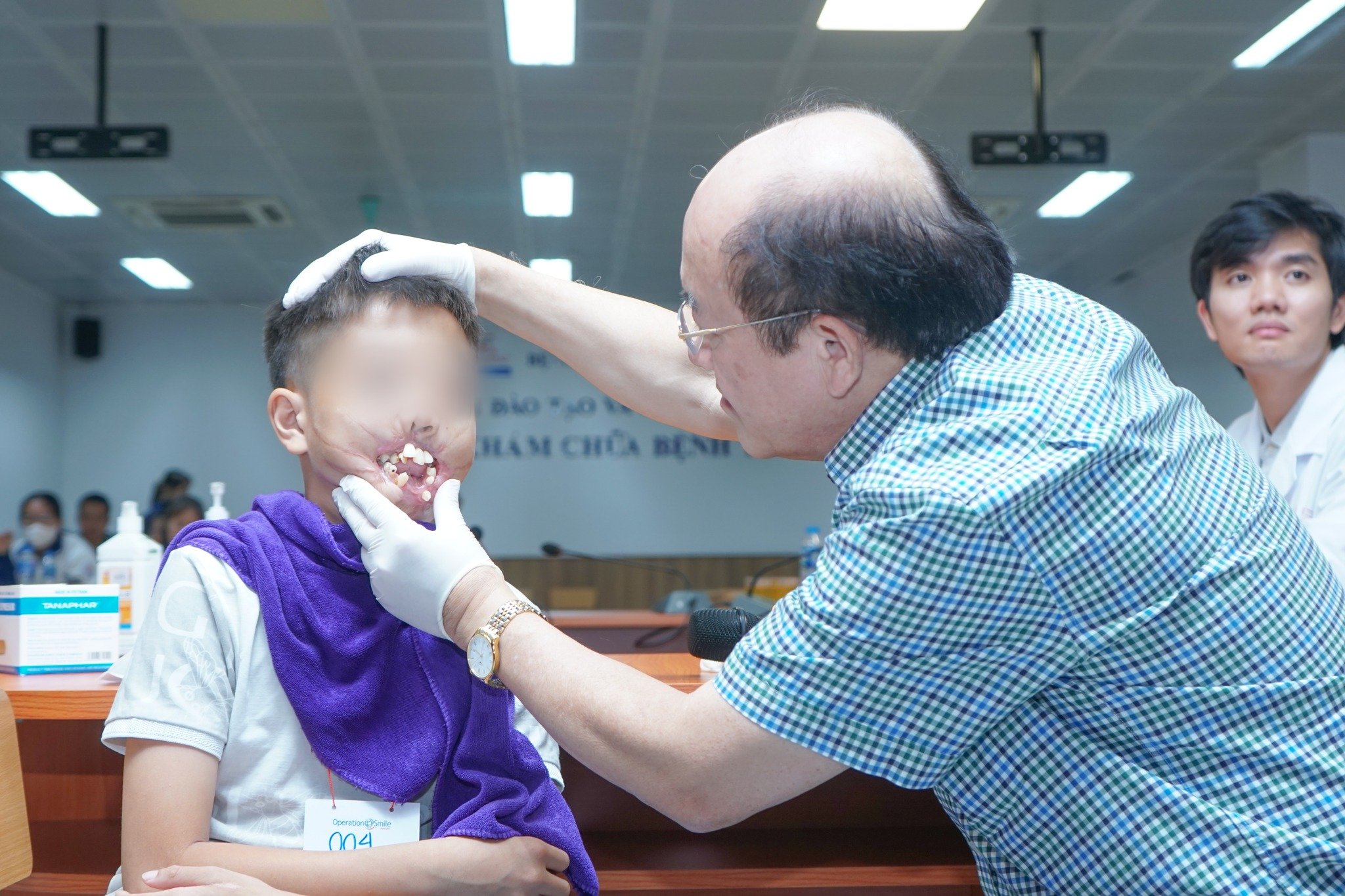
The youngest and most special case was examined and operated on in this batch.
Also during this examination, after the first screening day, on November 19, 2024, E Hospital doctors performed the first microsurgery on Mr. DHH (male, 35 years old, in Nghi Xuan commune, Ha Tinh province). Mr. H. learned about the program when he accidentally read information posted on E Hospital's fanpage. He decided to register and come to the International Microsurgery program for examination with a condition of mandibular bone defect/mandibular ameloblastoma.
During the examination, the doctors discovered that the patient's jawbone showed signs of serious inflammation, which would be life-threatening if not operated on soon. Immediately, the doctors of E Hospital consulted with Professor Nguyen Tai Son - Medical Advisor of Operation Smile Vietnam, Vice President of the Vietnam Association of Plastic and Aesthetic Surgery; experts from EDA Hospital, Taiwan... determined that the patient had lower jaw osteomyelitis after ameloblastoma surgery with fibula bone reconstruction without vascular connection 7 months ago. The patient was indicated for surgery to remove the inflamed bone and reconstruct it with a fibula flap using microsurgery techniques.
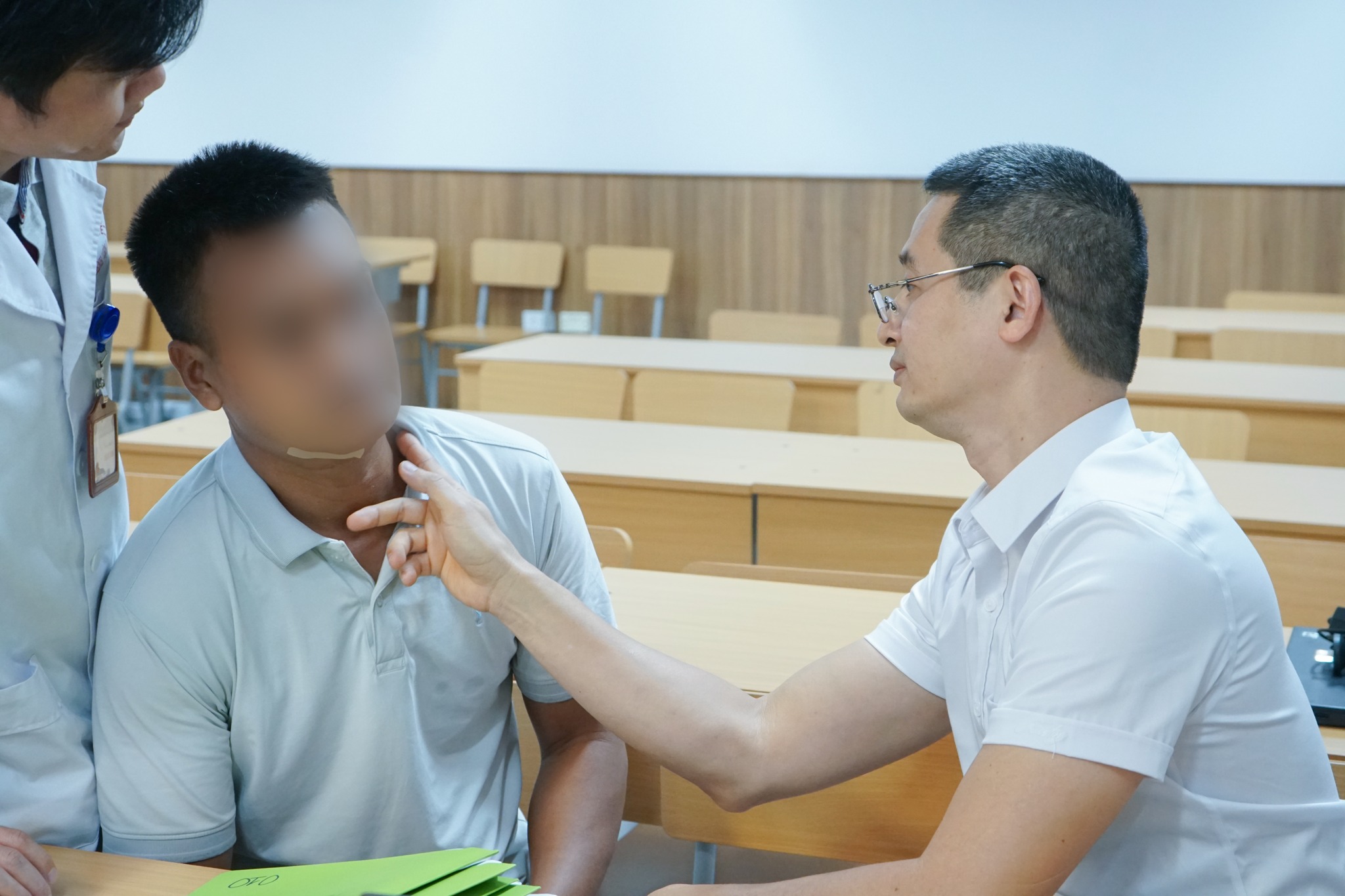
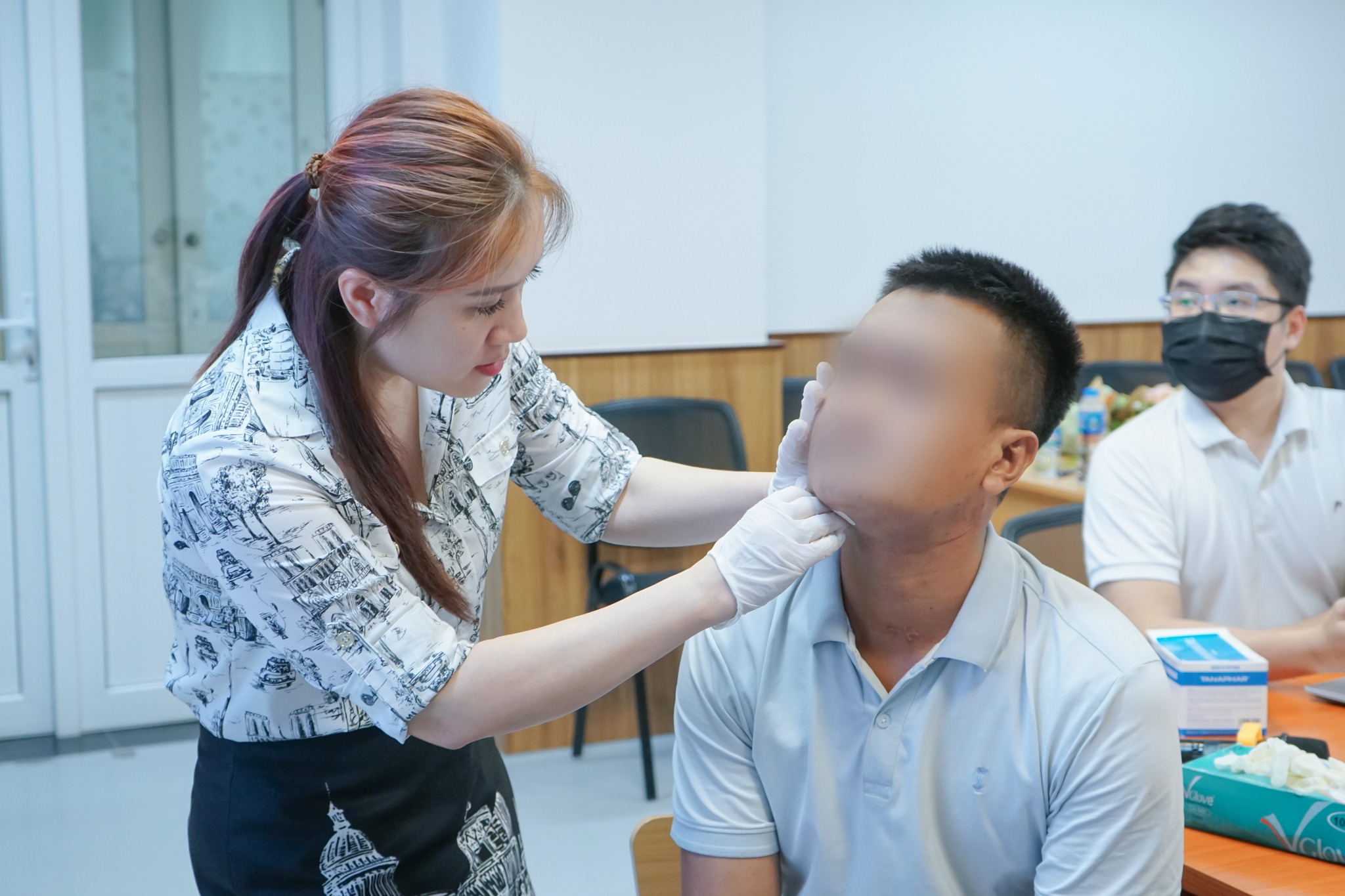
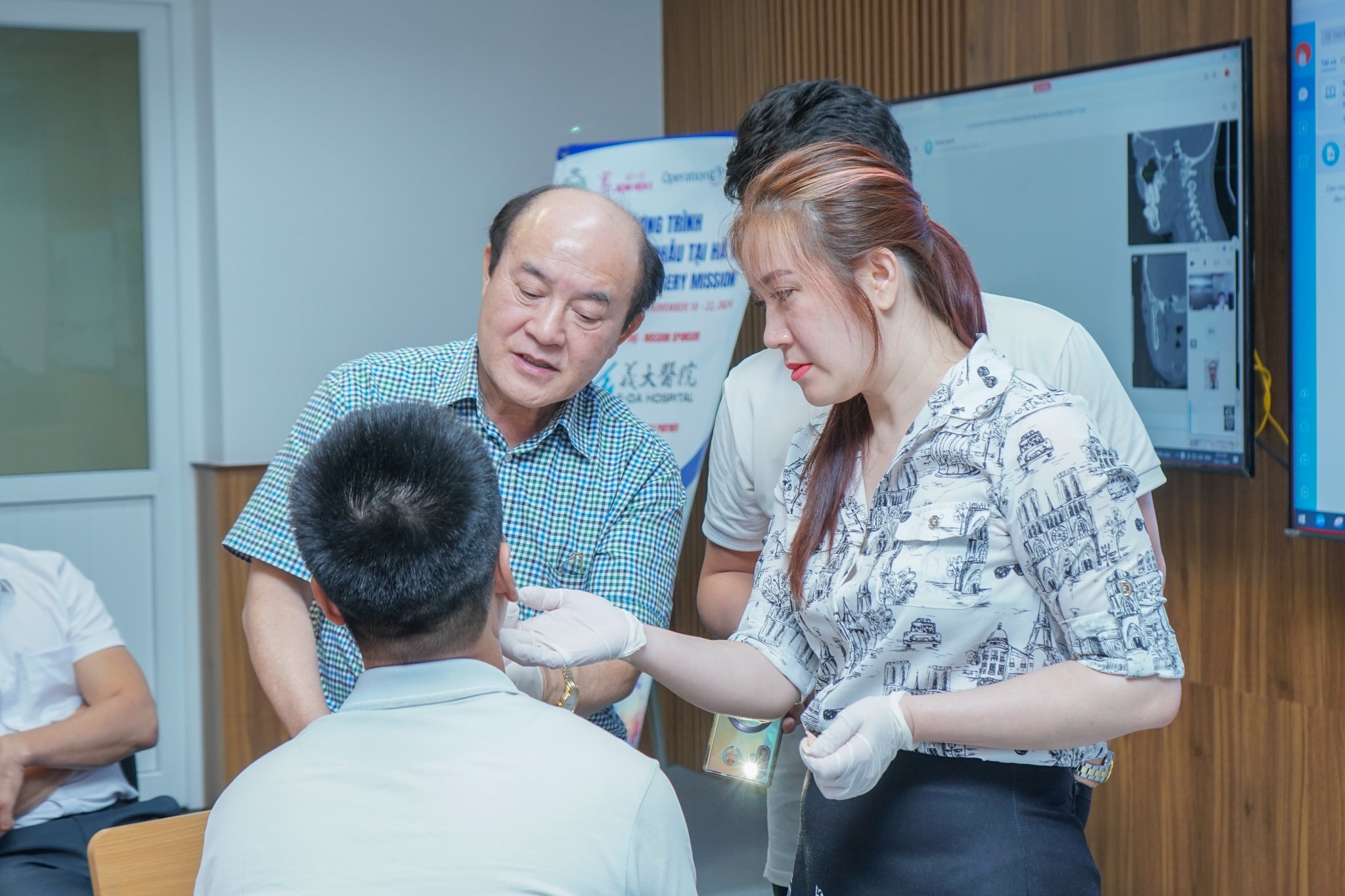
Doctors and specialists consulted and prescribed surgery to remove the inflamed bone and create a fibula flap using microsurgery techniques for the patient.
Dr. Nguyen Hong Nhung - Department of Dentistry, E Hospital; Lecturer of the Department of Oral and Maxillofacial Surgery, University of Medicine and Pharmacy - Vietnam National University, Hanoi - is a leading expert in microsurgery techniques in the maxillofacial region, with more than 10 years of experience performing about 1,000 microsurgeries for many patients with maxillofacial diseases, along with doctors from the Department of Dentistry and the Department of Plastic and Aesthetic Surgery, E Hospital, who performed this surgery.
According to Dr. Nguyen Hong Nhung, such microplastic surgery usually lasts about 8 - 10 hours. After surgery, the patient can stop the pain, practice swallowing, practice speaking and return to normal life. Currently, doctors at E Hospital have deployed microplastic surgery flap techniques to treat many cases of diseases related to maxillofacial cancer, especially oral cancer, with many good results, bringing high treatment efficiency to cancer patients, at the same time helping to restore function, anatomy, aesthetics as well as psychology, improving the quality of life for patients.
Also fortunate to be examined and treated this time is Ms. PTL (female, 40 years old, in Hai Duong) who had a left maxillary bone defect after surgery to remove a maxillary bone carcinoma, dissect the neck lymph nodes, and create a sphincter flap 2 years ago. Currently, the patient has a sunken left cheek area under the left eye socket. After consulting with experts from EDA Hospital, Taiwan, the patient was prescribed surgery to create a maxillary bone defect using microsurgery techniques.
These are 3 of 8 patient cases examined and consulted by doctors from E Hospital on the first day of this meaningful and humane program.
Outstanding benefits from microsurgery
In order for all people to receive high-tech treatment, from November 18 to November 22, 2024, E Hospital will continue to coordinate with Operation Smile, University of Medicine and Pharmacy - VNU to organize an international microsurgery program to organize screening and microsurgery treatment of head and neck cancers and diseases of the seventh nerve... with the participation of Dr. Nguyen Tan Van - Deputy Head of the Faculty of Dentistry, E Hospital: Head of the Department of Oral and Maxillofacial Surgery, University of Medicine and Pharmacy - VNU; Dr. Nguyen Hong Nhung - Faculty of Dentistry, E Hospital, lecturer of the Department of Oral and Maxillofacial Surgery, University of Medicine and Pharmacy - VNU, along with leading professors and doctors in pathology and plastic surgery of the head, face and neck from home and abroad. The program will support all surgical costs for patients with large tumors or cancers of the maxillofacial region; Patients with maxillofacial defects; facial nerve paralysis.
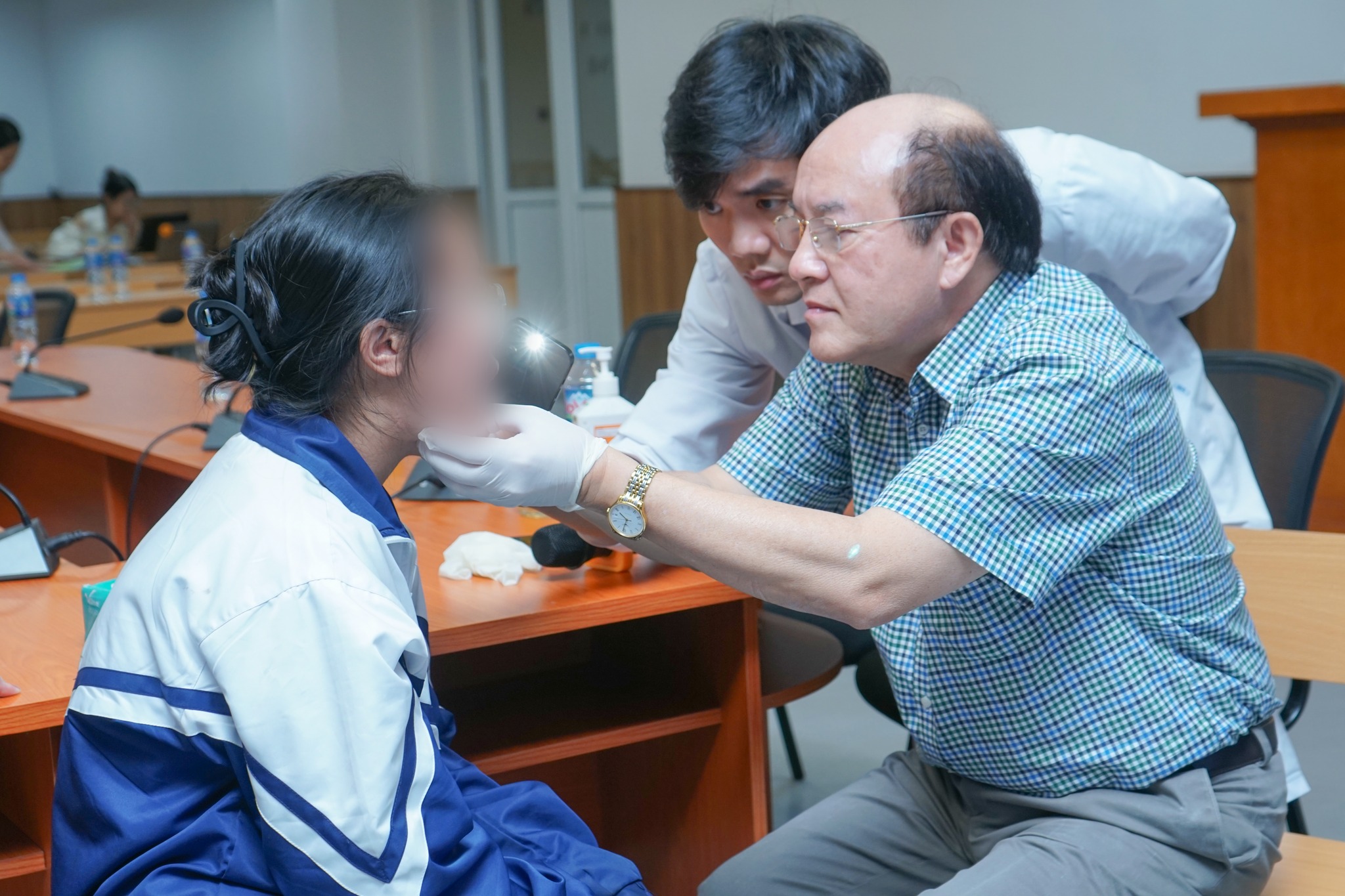
Microsurgery is a highly effective treatment...
Dr. Nguyen Tan Van - Deputy Head of the Department of Dentistry, Hospital E; Head of the Department of Oral and Maxillofacial Surgery, University of Medicine and Pharmacy - Vietnam National University, Hanoi shared that when patients have large and complex facial injuries, choosing the microsurgical reconstruction method to reconstruct the patient's defects is the optimal choice and brings many benefits to the patient.
Microsurgery is one of the most advanced techniques in reconstructing maxillofacial defects in the world as well as in Vietnam today. If in the past, many maxillofacial lesions were difficult to treat conservatively when surgery was required, now, with advances in microsurgery, it has brought a new quality of treatment. The biggest advantage of this method is to connect, restore, and protect damaged body parts. For large maxillofacial defects, using local flaps is not enough to cover the defects, sometimes when taking local flaps, it will cause deformation at the flap location. Therefore, for cases with large defects, the most optimal method is to bring flaps with a tail stem from a distance to that defect, the plastic surgeon uses a microscope and microsurgery techniques to connect blood vessels to re-establish blood supply to nourish the skin flap.
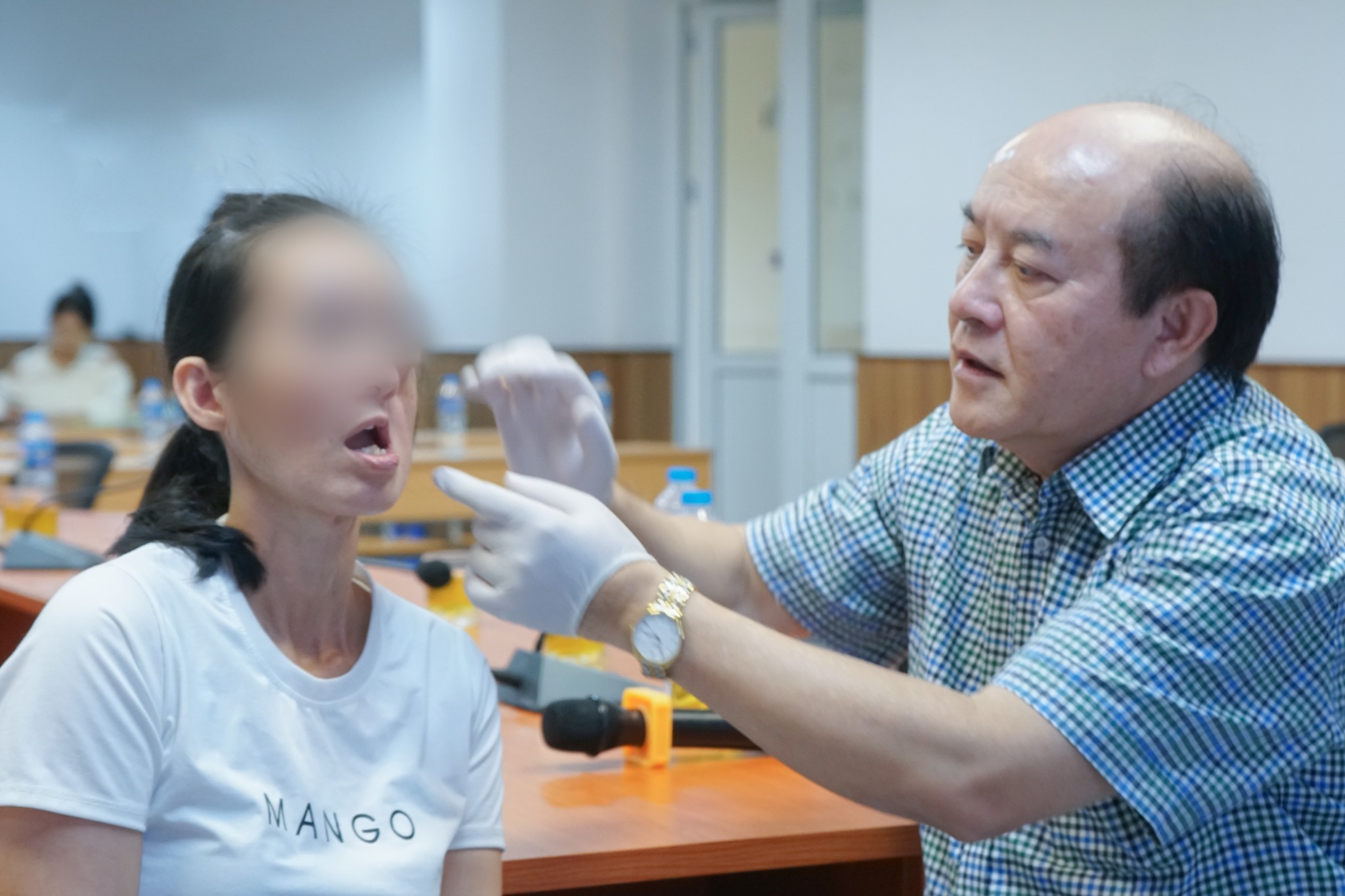
...at the same time helping to restore function, anatomy, aesthetics as well as psychology, improving the quality of life for patients.
With this method in treating large and complex facial injuries for patients, it seems that the difficulty is "concentrated" on the surgeon. This is a difficult technique, requiring a team of highly qualified surgeons, who must be highly focused and almost absolutely precise during surgery because microsurgeries often last from 8-10 hours, and can even be up to nearly 20 hours. During microsurgery, surgeons use specialized microscopes combined with high-precision medical instruments to repair and preserve the smallest structures in the body. Bringing remote flaps with vascular pedicles to the defect area, then using microsurgery techniques to connect blood vessels (arteries, veins), nerves... with a diameter of only a few mm, helping to restore those defects with remote flaps for the patient.
In cases of patients with maxillofacial cancer, microsurgery is considered the “gold standard” for treating cancer patients. In surgery, completely removing and preventing the growth of cancerous tumors is very important to ensure the patient’s life. However, when completely removing the tumor, it will leave a large facial defect, and furthermore, it will affect the patient’s ability to eat, speak, breathe and look good.
In the past, cases such as large tumors/cancers in the maxillofacial region would cause many difficulties for doctors during the treatment process because most patients were diagnosed with the disease at a late stage, the tumor had grown large, destroyed many areas of tissue, metastasized far away... and could not undergo surgery. Currently, at the Department of Dentistry, E Hospital, with a team of highly qualified surgeons with many years of experience and modern equipment... are using microsurgery techniques to treat cases with such serious injuries. Doctors can reconstruct organs in one surgery using free tissue flaps.
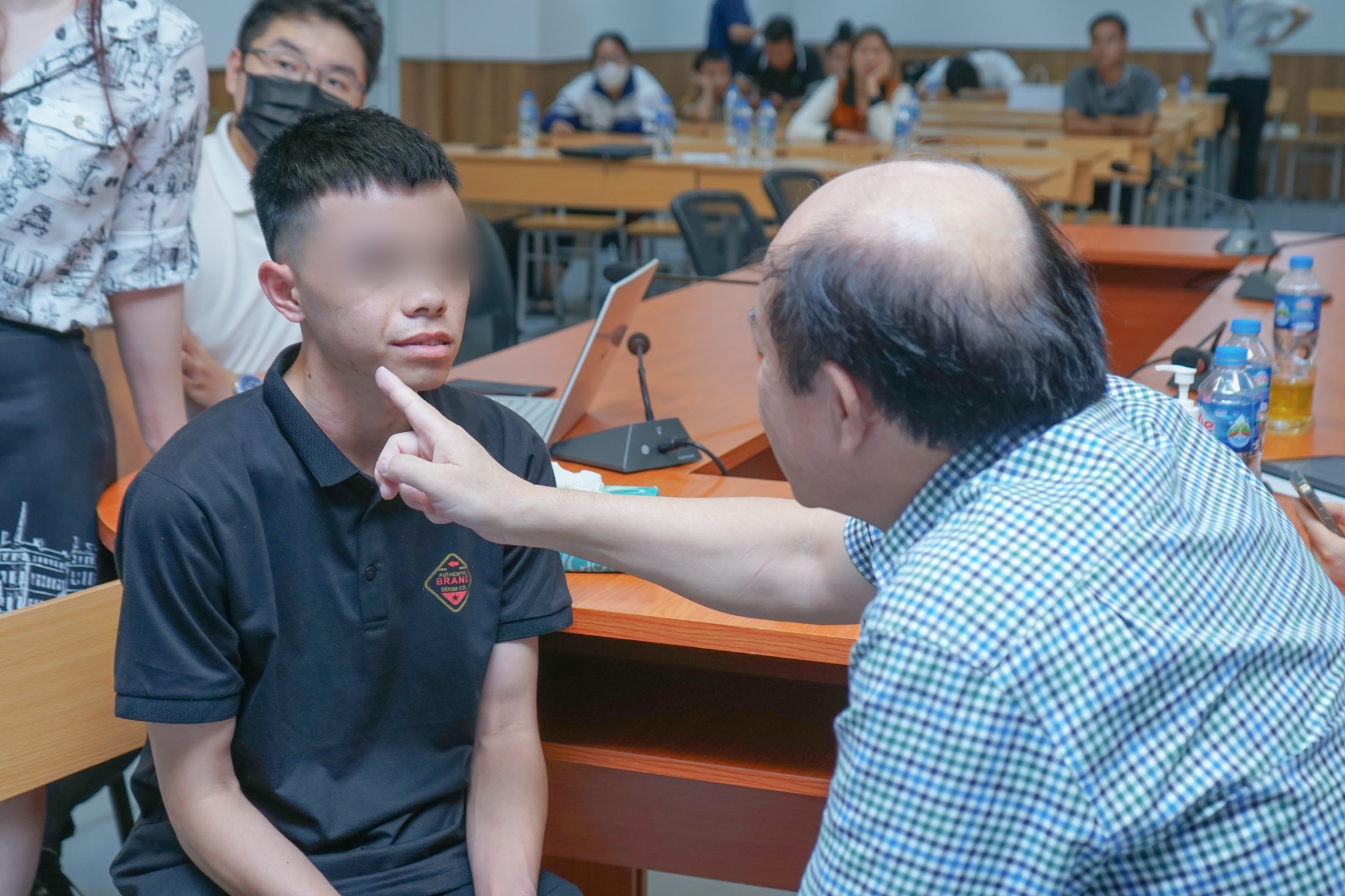
Regeneration and recovery of injuries help patients restore both function and aesthetics, helping them quickly reintegrate into life after treatment.
Therefore, to ensure the patient's functions, E Hospital surgeons need to create a cover with free skin and bone flaps taken from other areas of the body such as legs, arms, abdomen, back, etc. This will be to regenerate and restore the damaged areas to help the patient recover both function and aesthetics. Bringing back the patient's normal appearance will help them quickly integrate into life after treatment.
Currently, this is considered a highly accurate method, bringing many benefits in terms of results and recovery for many patients. This technique helps to minimize damage to surrounding tissues, while improving the accuracy of the repair, so patients will have a faster recovery time and reduce post-operative complications. Moreover, performing complex repairs on very small structures is a premise for E Hospital to perform organ transplants at the Hospital in the future.
According to statistics, the rate of people suffering from diseases related to the maxillofacial region, especially maxillofacial cancer, is on the rise. This is considered a big challenge for maxillofacial surgeons who have to ensure the safety of patients' lives while also giving them a normal life.
Currently, the Department of Dentistry and Maxillofacial Surgery – E Hospital is one of the departments of the Hospital that receives and treats patients with large, complex injuries to the maxillofacial region using microsurgical techniques to reconstruct the patient’s defects. This is considered an optimal method and brings many benefits to patients.
Source: https://giadinh.suckhoedoisong.vn/vi-phau-tao-hinh-cho-be-trai-11-tuoi-bi-phao-no-lam-vo-ham-mat-moi-va-nhung-ca-ton-thuong-nang-vung-ham-mat-17224112011164282.htm




![[Photo] Closing ceremony of the 18th Congress of Hanoi Party Committee](https://vphoto.vietnam.vn/thumb/1200x675/vietnam/resource/IMAGE/2025/10/17/1760704850107_ndo_br_1-jpg.webp)





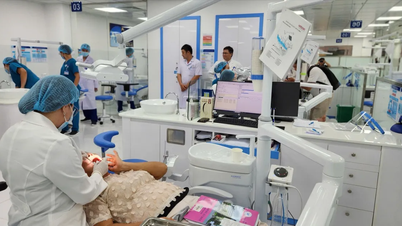



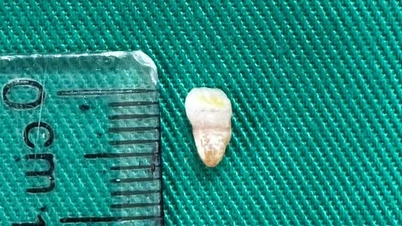

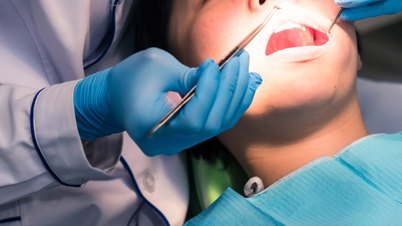
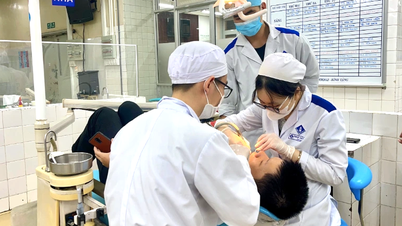



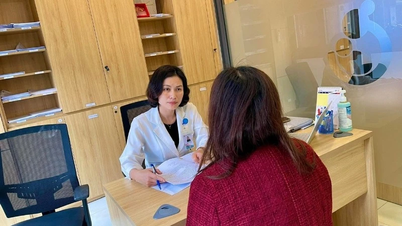

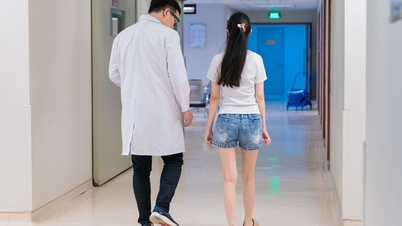
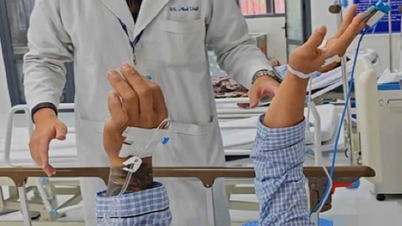










![[Photo] Nhan Dan Newspaper launches “Fatherland in the Heart: The Concert Film”](https://vphoto.vietnam.vn/thumb/1200x675/vietnam/resource/IMAGE/2025/10/16/1760622132545_thiet-ke-chua-co-ten-36-png.webp)






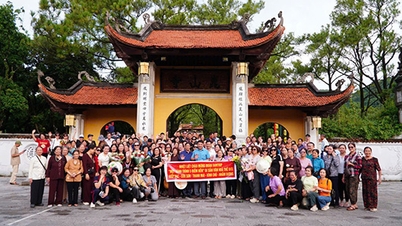








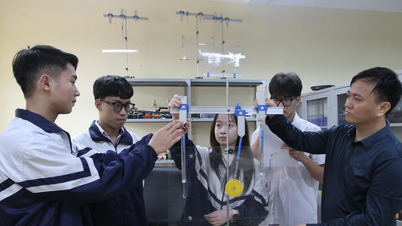


























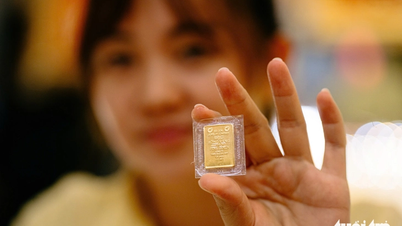








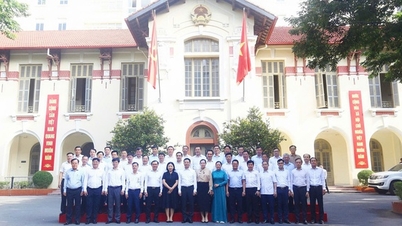



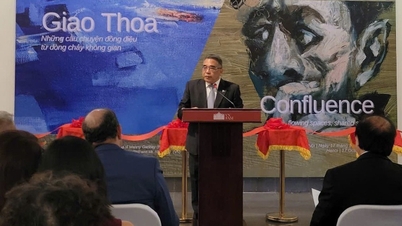








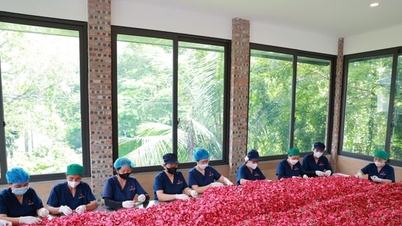












Comment (0)